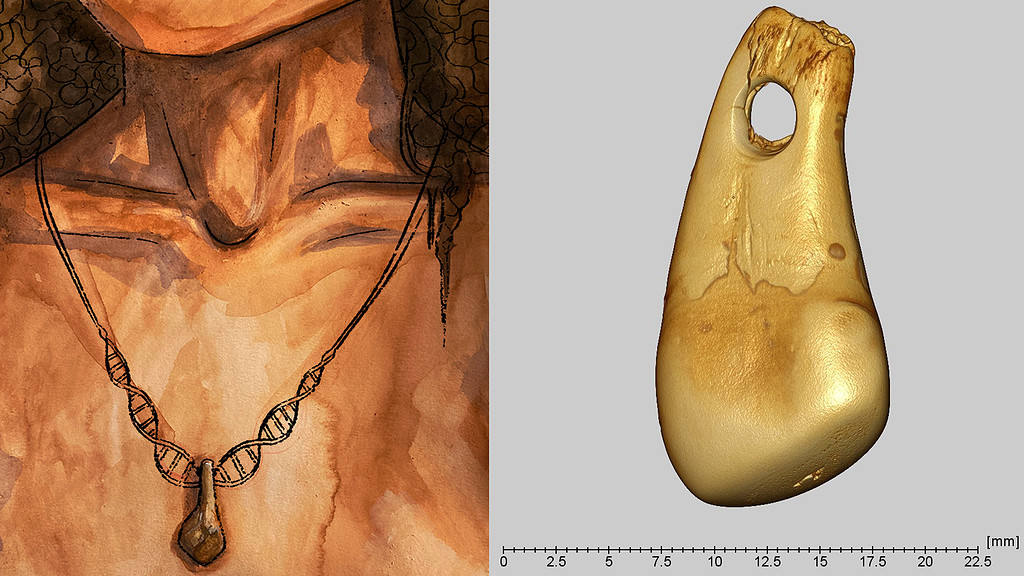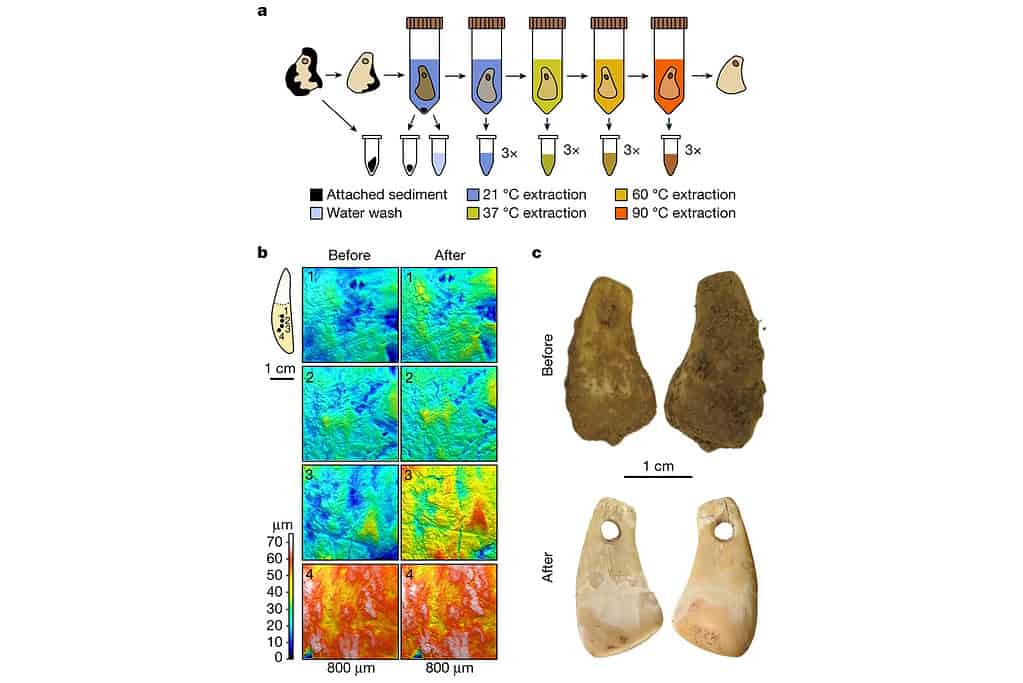Scientists can now decode the genetic profile of a dead person from jewelry items made of animal bones or teeth they ever wore. Recently, researchers from the Max Planck Institute for Evolutionary Anthropology isolated the DNA of a stone-age woman from a deer tooth pendant and found a new analysis tool that could be very useful in anthropological studies.

Using the DNA, they were able to reconstruct the genetic makeup of both the woman and the deer whose tooth she wore as a pendant. The study from the researchers also mentions that the ancient woman lived during the Paleolithic era (period from 2.5 million to 12,000 years ago) and her pendant is nearly 19,000 to 25,000 years old.
Since gold or silver ornaments didn’t exist at that time, it was quite common for people to wear artifacts made of animal skeleton parts. However, this is the first time scientists extracted human genetic material from a stone-age era tooth.
Moreover, their study also reveals a new technique that will now allow scientists to identify the owners of ancient ornaments — of course with one condition that the ornament should be made of either bone or teeth.
Elena Essel, the first author of the study and a professor at Max Planck Institute, told Science News, “By extracting DNA from tools and ornaments directly, we can now begin to study the division of labor and the role of individuals in Pleistocene societies.”
Using DNA to travel back to the stone age
The tooth pendant was recovered from Denisova Cave, a historical site in Siberia that has great palaeontological importance. This is because, in the past, numerous artifacts made by ancient humans, as well as remains of prehistoric animals, have been discovered here.
The findings from this site give scientists a chance to understand the lifestyle, culture, society, and mindset of early humans. However, since a variety of things are found here from different time periods, it’s always challenging to figure out what belongs to whom.
For example, imagine you find a tool made out of an animal’s bone in the Denisova Cave. If you don’t know whether it belonged to members of Denisova hominins (Denisovans), Homo neanderthalensis (Neanderthals), or Homo Sapiens (modern-day humans). How would you further study the tool in connection with a particular ancient society?
You wouldn’t be able to figure out which species made and used the tool or what significance it held in their lives. The study conducted by Essel and her team attempts to solve this challenge. They devised a non-destructive way to trace the human story linked to an artifact using human DNA.
But wait — how does human DNA end up in artifacts made of animal bones and teeth?
According to the study authors, bones and teeth are porous skeletal structures and they have the ability to retain genetic material. When a person wears an artifact made of skeletal parts, the DNA from his or her sweat, hair, skin cells, and body secretions may get inside the porous material and then remain there.
During the study, Essel and her colleagues washed the tooth pendant in a chemical solution at temperatures above 90°C (194°F). The chemical washing separated two types of DNA from the tooth; nuclear DNA and mitochondrial DNA.
A study of the mutations in the mitochondrial DNA revealed that the pendant was around 19,000 to 25,000 years old. The nuclear DNA, on the other hand, contained genomic information about the person who wore the pendant. When the researchers further examined the genomic data, they discovered that the pendant belonged to a woman of north Eurasian origin.
“Nuclear DNA analysis identifies the presumed maker or wearer of the pendant as a female individual with strong genetic affinities to a group of Ancient North Eurasian individuals who lived around the same time but were previously found only further east in Siberia. Our work redefines how cultural and genetic records can be linked in prehistoric archaeology,” the researchers note.
The best part – DNA extraction doesn’t harm the artifact
Artifacts like the tooth pendant are rare discoveries and hold a great amount of information about the Paleolithic era. Therefore, it’s very important to keep them preserved especially when they are studied. The researchers claim that their DNA isolation approach offers a feasible and non-destructive analysis method for artifacts made of bones and teeth (but can’t be used for stone artifacts).

Before developing the solution in which the deer tooth pendant was washed, they tested numerous chemicals and their effect on skeletal materials. This testing enabled them to come up with a chemical cocktail that washed human DNA from the tooth, and achieved that without causing any damage.
“The surface structure of Paleolithic bone and tooth artifacts provides important information about their production and use. Therefore, preserving the integrity of the artifacts, including microstructures on their surface, was a top priority,” said Marie Soressi, one of the study authors and a professor of archaeology at the University of Leiden.
The researchers now plan to study many other stone age artifacts using their DNA extraction method. They believe their approach will accelerate the process of artifact analysis and make it easier for paleontologists to dig deep into the lives of early humans.
The study is published in the journal Nature.






